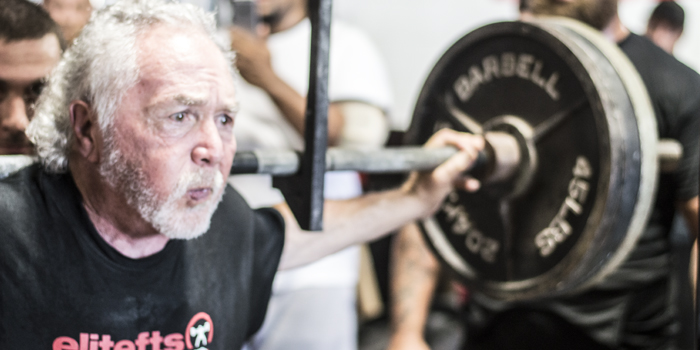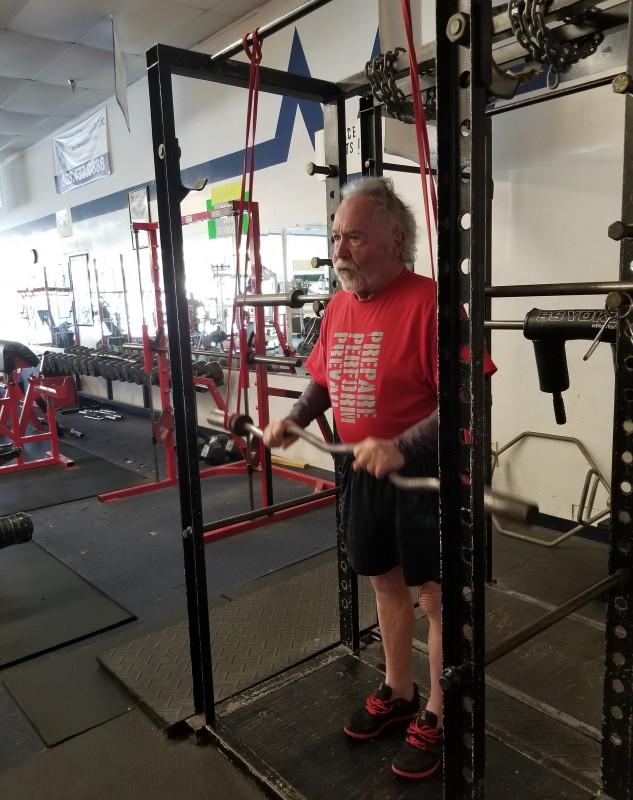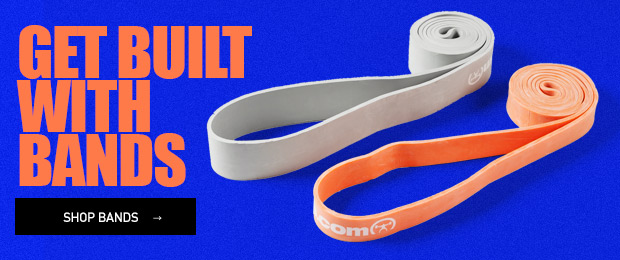
Previously, we have talked about conjugate training in the long off-season. There, we emphasized using a great variety of exercises and bars and devices. Then, we discussed meet preparation and our focus was more specific to the main lifts and accessories, therefore. Now, we’ll talk about what to do to recover from a meet.
It occurs to me that in a full power meet, one does about a week’s worth of lifting in one day! That is picking up a lot of heavy shit and putting it down for anyone, particularly for someone my age. That’s one of the reasons I discussed taking only two attempts in each lift at my next meet.
RECENT: Meet Report: Morganton Misfits at The IPA World Championships
What can you do to recover? Get right back at it? Back off a little or complete rest for a while? I can answer the question in one word: bands. If I stopped here, the use of bands would only be limited by your imagination. That is the point! The use of bands should only be limited by your imagination. That, however, would not make for a very good article. So, we’ll talk about how and why we use bands in a conjugate sort of way.
When I get home from a meet, the arthritis in my joints, especially my knees shoulder, and hands, is awful. My muscles are sore, and I hurt in more places than I can count. That may be partially my own fault. I know that after a grueling meet, I should stretch and do some very light exercise. Really, all I want to do is eat and sleep. I try not to eat crap after a meet but a proper meal instead, which takes time.

So, what do I do to get over being so beat up? It seems to me that getting a maximum amount of blood to tired muscles, tendons, and ligaments is of primary concern. I find, as do others, that that can be accomplished by exercises with bands and high reps. By high reps, I mean 25 to 50 reps per set, depending on the width of the band. I believe that these types of exercises can be done for a wave of four weeks. After that, and usually before that, I have to get back at it and use some heavy weights.
Max effort lower body is usually done with a belt squat, moderate weight, and bands. The more the weight, the lighter the bands. I like to use an elitefts Pro Light Band and moderate weight. In addition to squats on a belt squat machine, walking or simulating marching with weight and bands is a very good exercise. Also, deadlifts with a shrug bar and bands work well on max effort lower body.
Note: These max effort days are a misnomer. These days are moderate weight, moderate bands and moderate reps (10 to 12), whereas speed days involve some of the same exercises with very light or no weight and light weight and high reps (25 to 50). Accessory exercises like good mornings, pullthroughs, leg extensions, hamstring curls, hack squats, and leg presses should also be used with the same principals. Some of these can be used with bands alone to stimulate the flow of blood.
I do not do any squats with a bar during this time. There is no reason to put a bar on my back to compress my spine and screw with my bad shoulder. I can also do back and core work with bands, and I always use bands to work on this shoulder. Again, the use of bands is only limited by your imagination.
Max effort upper body is also a misnomer. I do not use max effort weights. In fact, I try not to even use a barbell. I try to use dumbbells, light weight with light bands, and high reps on speed day and moderate ones on max effort day. You can accomplish a great deal of range of motion with dumbbells to stretch your aching muscles and tendons.
Please be careful and be aware that as we age, tendons and ligaments become less elastic. We need to work them gently and only as far as they will comfortably go. To give you an example of what I mean, I was told by a massage therapist that my hamstring tendons felt like chicken bones. That is why we need high reps with bands to get as much blood into these non-elastic tendons as we can and give them the time needed to recuperate from a meet.
READ MORE: Understanding Groin Injuries: Tendon Injuries
I was recently taught an exercise that was credited to have come from Nate Harvey. It’s designed to be used after a heavy bench day. However, it fits perfectly into my recovery scenario. It consists of tying elitefts Pro Mini Bands to an overhead bar in a squat rack. The other ends are wrapped around a curl bar so that it is chest high. Then do pushdowns for four sets of 50 reps (see photo above).
I trust you get the point. We still do hard work. We still have a heavy day and a speed day. We still do a variety of exercises. The goal, however, in this wave, is not to get stronger. It is not to work on our form or technique for the main lifts. It is to recover! It is to infuse the joints, tendons, and muscles with as much blood as we can to help them recuperate and regenerate.
The length of time this is done generally increases with age. I certainly do not go more than one wave. It can, however, be done, and younger lifters don’t have to go as long. And, for the last time, your imagination is the only limitation to the variety of exercises that can be done with bands.










